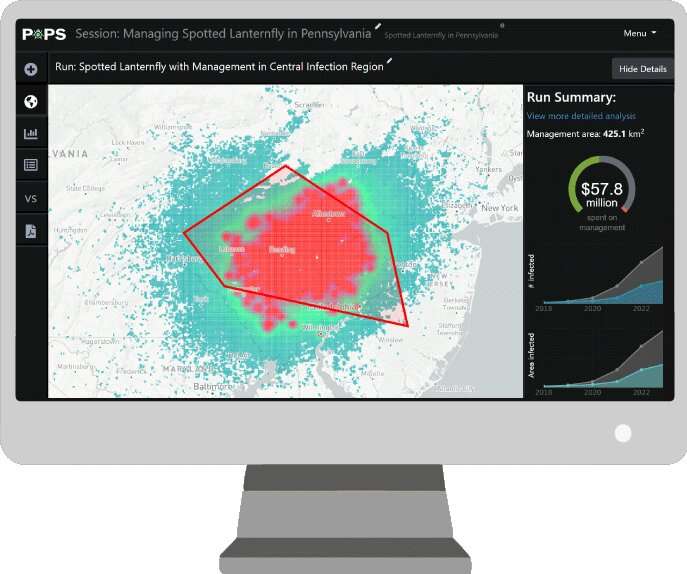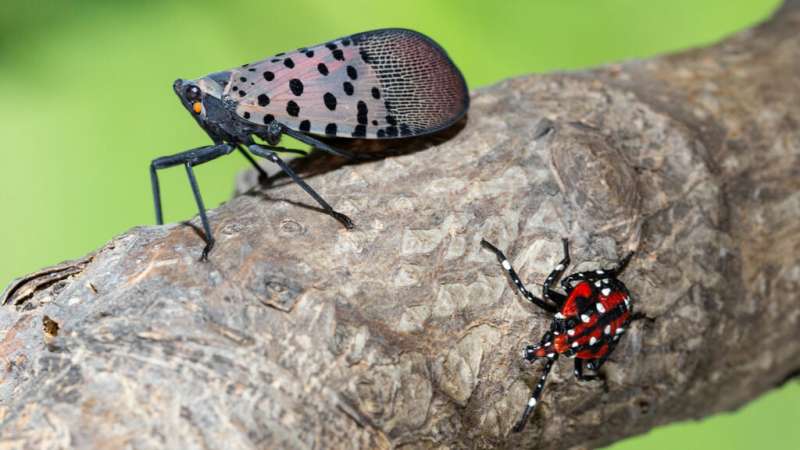A new way to stop insect pests in their tracks

Spotted lanternfly, emerald ash borer, hemlock woolly adelgid, Asian longhorned beetle. These are but a few of the hundreds of exotic insect pests that have been accidentally introduced to North America, causing millions of dollars in damage, not to mention ecological havoc, across agricultural fields and forests.
Management agencies like the US Department of Agriculture work to contain these pests, searching for ways to curb outbreaks and control their impact. But how quickly is a pest likely to spread to a new area? And where?
Researchers at the Center for Geospatial Analytics at North Carolina State University recently developed a new forecasting technology that can help the USDA and other agencies answer these questions, more quickly and easily than ever before.
It's called PoPS, the Pest or Pathogen Spread forecast, a sophisticated yet user-friendly tool that can be used to predict the spread of potentially any species.
Predicting the spread of pests with big data and models
Computer models are the go-to method for predicting the spread of insect pests and the pathogens that cause plant disease. Running these models typically requires a lot of data––gigabytes and gigabytes of data––and being fluent in the language of computer code. Assorted software is also usually needed, and so is a familiarity with the ins and outs of model calibration and validation: that is, making sure that a model is well-matched to the data feeding it and checking that the model is doing a good job of predicting what it's supposed to.
For managers who need answers quickly, without being expert coders, the task can be daunting. Under most circumstances, preparing the data and models to simulate a pest's spread can take months to a year. Enter PoPS, a nearly fully automated framework that asks its users for a few simple inputs to output spread predictions and comparisons of management scenarios.

What makes the new PoPS model different?
With PoPS, managers simply provide three years' worth of infestation information and adjust a few values on the web-based dashboard to answer pressing questions about when, where and how much a pest problem is likely to grow, and how much it may cost to stop it.
More information: The PoPS website: popsmodel.org/
Provided by North Carolina State University


















